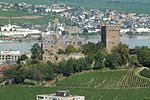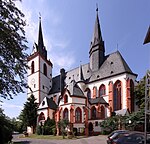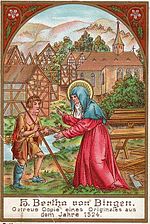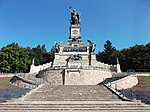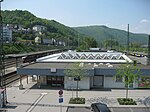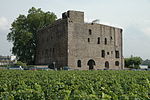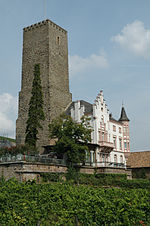Bingen am Rhein

Bingen am Rhein (German pronunciation: [ˈbɪŋən] ) is a town in the Mainz-Bingen district in Rhineland-Palatinate, Germany. The settlement's original name was Bingium, a Celtic word that may have meant "hole in the rock", a description of the shoal behind the Mäuseturm, known as the Binger Loch. Bingen was the starting point for the Via Ausonia, a Roman military road that linked the town with Trier. Bingen is well known for, among other things, the story about the Mouse Tower, in which the Bishop of Hatto I of Mainz was allegedly eaten by mice. Saint Hildegard von Bingen, an important polymath, abbess, mystic and musician, one of the most influential medieval composers and one of the earliest Western composers whose music is widely preserved and performed, was born 40 km away from Bingen, in Bermersheim vor der Höhe. Bingen am Rhein was also the birthplace of the celebrated poet Stefan George, along with many other influential figures.
Excerpt from the Wikipedia article Bingen am Rhein (License: CC BY-SA 3.0, Authors, Images).Bingen am Rhein
Frankenstraße,
Geographical coordinates (GPS) Address Nearby Places Show on map
Geographical coordinates (GPS)
| Latitude | Longitude |
|---|---|
| N 49.966666666667 ° | E 7.9 ° |
Address
Frankenstraße
Frankenstraße
55411 , Bingerbrück
Rhineland-Palatinate, Germany
Open on Google Maps
